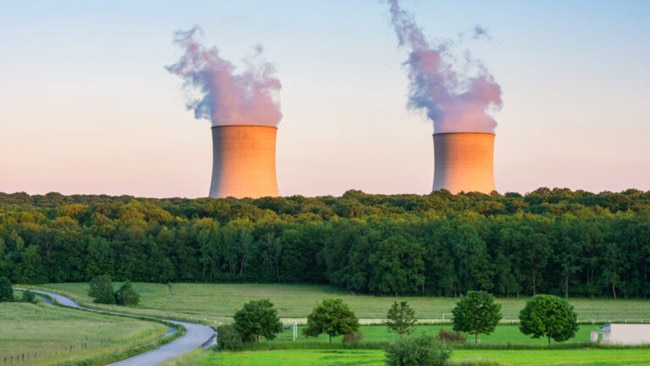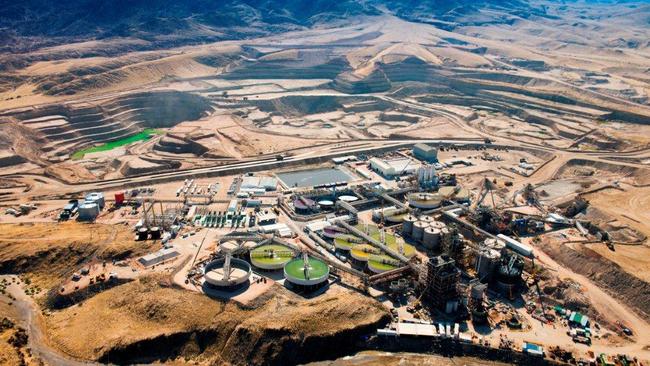Why expert says this uranium cycle will be different for Paladin Energy
Paladin Energy has been through the wringer, but a wiser PDN is poised to ride a new uranium wave and is seriously undervalued, says Canaccord Genuity.

Paladin Energy has been through the wringer, but a wiser PDN is poised to ride a new uranium wave and is seriously undervalued, says Canaccord Genuity.
The financial service firm’s James Bullen says the $1.86 billion capped Paladin (ASX:PDN) – the biggest standalone uranium stock on the ASX – has learnt hard lessons over recent years.
Last time the uranium cycle moved into a boom it brought speculators, investors and start-up Aussie miners along for the ride. Then things went wrong.
Most emblematic of the nigh on incomprehensible behaviour of the yellowcake scene in the decade from 2007 to 2017 was Paladin.
For the latest mining news, sign up here for free Stockhead daily newsletters
Commonly thought of as a bubble, prices had been lifting since 2003 before spiking to almost $US140/lb in 2007.
The bull market came to a crashing halt just four years later when the Tohoku Earthquake and the meltdown of the Fukushima Daiichi nuclear plant on March 11, 2011, prompting Japan to shut down more than 50 nuclear reactors accounting for upwards of 10 per cent of global uranium demand.
It fuelled a massive hit for the global uranium market.
Before the fall, Paladin, 75 per cent owner of the Langer Heinrich uranium mine in Namibia, looked to have timed its run perfectly.
Beginning shipments in 2007, it was worth more than $4 billion at its peak.

But riddled with debt and heavily exposed to spot pricing, it went into administration in 2017 after the market came crashing down.
By that stage prices were in the low twenties, having sunk as low as $US18/lb in 2016.
In 2018 Paladin – having failed to hawk its majority stake to Chinese minority owner CNNC – was reborn in a major recapitalisation, and with the nuclear market having awoken from its slumber, two years ago its new board signed off on the restart of the 6Mlb-a-year Langer Heinrich.
The developer expects to deliver the project at a cost of $US118 million, with first production due in the first quarter of 2024.
Macquarie, Shaw and Partners, Canaccord Genuity and more have buy ratings on the revived uranium hopeful.
We spoke to analyst James Bullen from Canaccord Genuity, which in February placed a $1.15 price target on the company (around 85 per cent upside on its share price) on why this cycle will likely be different for the ASX’s biggest standalone uranium stock.
Telling tale of Paladin’s collapse in 2017
The situation that saw Paladin fall apart in its previous incarnation is worthy of observation.
There are two different markets in uranium.
Term contracts between miners and utilities are set at specified prices, generally above the prevailing spot price, by far the larger uranium market.
Then there’s the spot market itself, which gives price signals on the direction by allowing utilities and traders to buy pounds as needed.
Spot prices have risen from around $US30/lb two years ago to trade at about $US50/lb for most of this year.
While they are not reflective of market prices per se, they give a strong sense of the direction the market is heading, with most analysts predicting a shortfall of uranium supply against demand from around the middle of the decade.
Bullen says Paladin’s management is not relying on the spot-exposed sales model which hurt the company in its past life.
MORE FROM STOCKHEAD: History on gold stocks’ side | ASX stocks cosy up to Tesla | FitzGerald eyes potential rare earths monster
“I think, obviously, we had uranium prices going all the way down to $US20 a pound,” he said.
“They (Paladin) were very much spot price exposed previously, and so when you’ve got spot prices below what your cash costs are, that’s never going to be sustainable.
“And so they made the difficult decision then that they had to shut it in to preserve economic value and I think that was absolutely the right call for those guys.
“I think what they’ve had here is a positive reception from a number of utilities. And you can see that through the fact that they’ve been able to execute three offtake agreements.
“And they’ve got a fourth one that they are finalising and in addition to that, they also have the agreement to supply CNNC (25 per cent owner of Langer Heinrich).
“So I think the way that they are structuring it this time around is going to be a touch more conservative, there’s going to be layering of contracts.”
Bullen says the contracts will be fixed price or have floors that should help underpin the mine’s cost base.
Why is Paladin not trading higher?
Given its status as one of the few new uranium producers likely to enter the market in the next couple years, Paladin’s recent stock price trajectory runs against the grain of the positive tale being spun by the company.
Its share price has fallen by around a quarter over the past 12 months.
Much of that, Bullen says, is down to general market sentiment including concerns about interest rates, along with a pause in the uranium spot price run powered by spot market buying by traders such as Sprott in 2021 and 2022.
“During that period we have had rising rates, and that has a disproportionate effect on anything that is pre-revenue or pre-production,” he said.
“That has driven down the price. There’s also maybe been a bit of retail money, that’s got a bit impatient with the sector. We have seen the spot price sitting in and around that $US50-60 a pound for some period of time now.
“People have been waiting for an inflection for it to go higher and they may have decided that they can park their money elsewhere, given the rising rates environment.”

Will uranium prices go higher?
That is the billion dollar question. In Canaccord’s judgment, prices will rise long term to $US65/lb to incentivise new greenfields operations to enter the market.
An additional “Western premium” of $US10/lb could be in place after Russia’s invasion of Ukraine.
The belligerent nation has been frozen out by the West but is the world’s largest enricher of uranium for nuclear fuel. It is also a major hub for product from neighbouring Kazakhstan, one of the world’s biggest producers of mined uranium oxide.
Canaccord Genuity expects uranium demand to rise 3 per cent a year through 2035, with Bullen citing electrification, decarbonisation and non-OECD economic growth as major drivers of an uptick in uranium demand.
That is before accounting for a potential rise in the rollout of “small modular reactors”, novel technology which could enable a faster rollout of nuclear fleet if it can be commercialised successfully.
“If the SMR technology does work, that will be a big increment above our 3 per cent per annum demand growth outlook,” Bullen said.
At the moment China is the engine room for new uranium demand, with a major reactor build in place. Bullen says World Nuclear Association numbers show there are globally around 60 new reactors under construction, 104 planned and 338 proposed.
“We will see how that all comes to pass. I don’t really have a breakdown in terms of what we view as speculative, we haven’t really delved into the 338,” Bullen said.
Visit Stockhead, where ASX small caps are big deals
“But I think the 104 planned is a reasonable number.
“So to put that in perspective, I think if they all play out, it’s about 100 per cent growth in global demand that will happen.
“Obviously that’s not in our numbers (but) if you have a look at the Chinese reactor growth, they’ve got 21 in construction, 47 planned and 156 proposed and that’s all WNA data, not Canaccord data.
“We absolutely see the need for new greenfields. And that’s what underwrites our baseline of $US65/lb. And then if we’re going to see Kazakhstan have less market share, then we think that there’s going to be a need for a $US10/lb Western premium.”
The argument for higher prices was supported by demand in the spot market from the US Department of Energy, which was trying to buff up its strategic reserve, Bullen said.
“Supporting that we did see last year that the DoE had a tender process where they were looking for pounds for the build up of their strategic reserve,” he noted.
“And they paid well above spot for all of those pounds that they purchased. The highest price that they ended up having to pay, granted only for 100,000 pounds, was $US71.”
Upside for uranium stocks
Bullen says Canaccord likes Paladin because it is a proven performer with a mine that, operationally at least, did not have many major hiccups last time it was in production.
“And that’s probably why it’s been one of the first restarts able to secure meaningful contracts with top tier utilities,” he said.
“At the moment, they’re about 25-30 per cent through the construction for the restart, they’ve got 600 odd folks on site and they will be conducting a site visit so investors can see what they’re up to.”
Canaccord also covers Boss Energy (ASX:BOE), owner of the Honeymoon uranium project in South Australia, Peninsula Energy (ASX:PEN), which is restarting the Lance mine in Wyoming and secured a contract last year to supply into the DoE’s strategic reserve, and Lotus Resources (ASX:LOT), which now owns the (former Paladin) Kayelekera mine in Malawi.
“All of those are restart stories, because we think that that’s where the money is going to be made initially,” he said.
“And then after that you’re going to look for additional leverage from the greenfields.
“But we think that those guys are going to be the first ones to capture the value of the upcycle this time around.”
Paladin and Boss are Canaccord’s two preferred picks. But even with mine’s restarting there is a lot of room for primary supply to grow.
“While they are material projects in their own right, this is a market at the moment where you’ve got circa 190Mlbs of demand,” he said.
“Current primary production is in the range of around 130Mlbs, obviously you’ve got secondary production above that. Paladin’s 6Mlb per annum.
“Boss has a licence to provide 3.3Mlb but the initial stage of honeymoon is 2.45Mlb.”
This content first appeared on stockhead.com.au
The views, information, or opinions expressed in the interviews in this article are solely those of the interviewees and do not represent the views of Stockhead. Stockhead does not provide, endorse or otherwise assume responsibility for any financial product advice contained in this article.
SUBSCRIBE
Get the latest Stockhead news delivered free to your inbox. Click here


